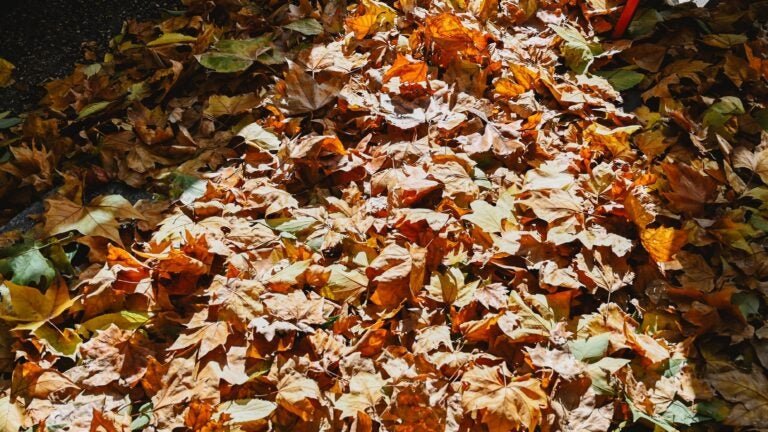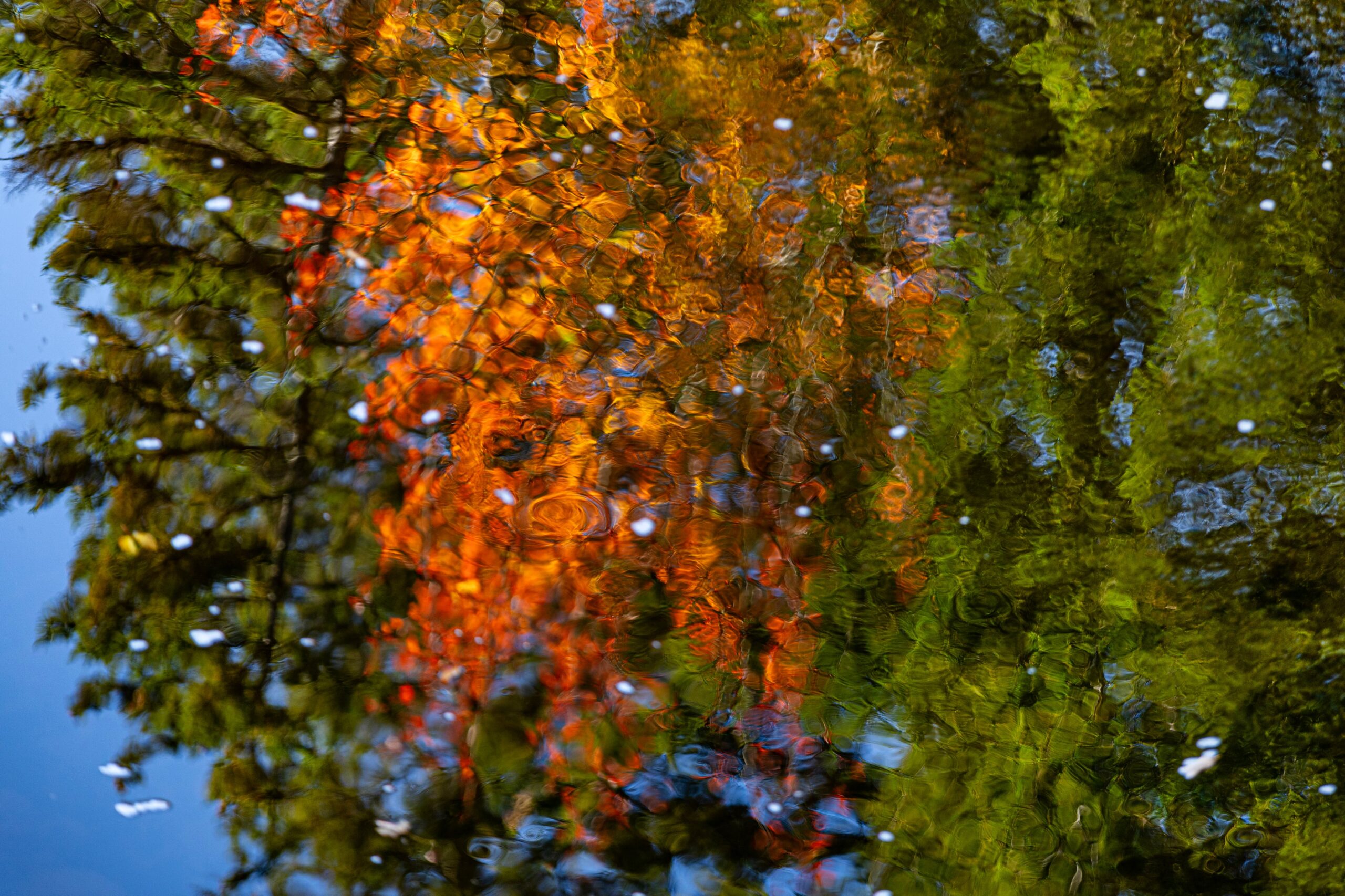Gardening
A campaign by the National Wildlife Federation and the Xerces Society, asserts that leaves are not trash, debris, or yard waste.

Autumn in New England is a cherished time marked by well-honored traditions, including apple picking, pumpkins, hayrides, and leaf peeping. The spectacular brilliance of our fall forests has made the region an international destination, drawing thousands of visitors to take in the panoply of foliar colors produced by the trees and shrubs of our woodlands, wetlands, and forests.
Spending a weekend afternoon, strolling through the forest with my family under clear blue skies, the canopy of the trees pierced by shafts of sunlight, I could not imagine a better way to pass the time. The leaves rustle gently in the breeze, the intoxicating aroma of fallen leaves wafts into my nostrils, while songbirds sing amid the distant hum of backpack blowers. Hold on, one thing seems out of place in my mental picture of an ideal autumn day in New England.
I suspect many readers are nodding in agreement with their displeasure regarding the ever-present droning of landscape care equipment. While I am not here to argue for banning them altogether, I will make the case that we are throwing away a precious gift and a crucial resource. A more nuanced approach is best when weighing ecological value and function with landscape stewardship and utility. Let us take a closer look at the Leave the Leaves campaign and discuss what steps you can take this fall to support local ecosystems while caring for how your yard looks.
Leave the Leaves is a campaign by The National Wildlife Federation and the Xerces Society. It was conceived of as an educational program to help home gardeners shift their perspectives on the annual accumulation of leaves from trees. Foremost is the assertion that leaves are not trash, debris, yard waste, or a maintenance nuisance. NWF estimates that Americans throws away about 35 million tons of yard waste annually — material that ends up partially in municipal composting programs and partially in landfills.
The second point of emphasis from the campaign is that fallen leaves are home to an abundance of life that includes moths, butterflies, pollinators, and beneficial insects. By keeping leaves in place, you can ensure that you and your garden benefit from the presence of those organisms. A recently published study from entomologists at the University of Maryland has quantified just how much life fallen leaves sustain, and it’s a surprisingly staggering amount. The study also quantified the impacts that leaf removal and leaf shredding have on those insect communities.

So, how can you apply the findings of this study to your garden?
Let us begin with a series of rhetorical questions:
Does leaving the leaves mean you have to embrace a messy lawn?
Does embracing this campaign signal that you are not a good steward of your yard?
Conversely, does keeping your yard tidy mean you are caring for it?
These are valid questions and real concerns that homeowners wrestle with when it comes to fall leaf maintenance. Here is how to strike a balance between supporting ecosystems and the appearance of your yard.
Let leaves lie in planting beds wherever they fall
There is nothing wrong with keeping pathways, driveways, and high-traffic lawn areas clear. Simply add those leaves to the ones in your planting beds. The UMD study showed that removing the leaves or shredding them was most harmful to insects, resulting in a 44 percent decline in moth and butterfly populations, 67 percent reduction in spiders, and losses of beetle and parasitic wasp numbers as well. Important to note is that this study did not include soil-born organisms — those responsible for recycling the nutrients in leaves for future use by plants and others. This means that the total life sustained in the study quadrant was even larger!
Keeping those leaves in place, while also ensuring pathways and driveways are clear, results in huge benefits for your garden. A light covering of leaves on your lawn won’t damage the grass like a thick layer will. Again, keeping lawn areas clear is fine, just try to keep that precious resource on site and relocate it to your perennial beds.
Leaves are nature’s blanket
Some believe a lighter cleanup in the fall means a more thorough cleanup in the spring. The UMD study again showed that insects emerged from the leaf litter in stages that extended well into the summer. Waiting for the first warm spring day was considered a good rule of thumb, but the evidence tells us differently. I would rather spend time planting in the spring than raking out perennial beds. Another benefit of the layer of leaves is weed suppression; when you rake it away, you are exposing the soil to light and encouraging weed seeds to germinate.
Speaking of soils, that layer of leaves serves another important purpose: it insulates and tempers the extremes of winter. Furthermore, studies have shown that repeated removal of leaves leads to degradation of soil life and function. Leaves are nature’s blanket, a way to protect perennial plant crowns, bulbs, and root systems.
How ironic that many pay a service to remove this resource, often seen as a nuisance, and then pay the same service to place another tree-based product (mulch) back onto our gardens. Leaving the leaves can save you money, support pollinators, butterflies, and beneficial insects, all at no additional cost to you. You can maintain your garden’s aesthetics by moving the leaves around to your beds, shrub borders, and tree plantings all while ensuring less yard “waste’’ exits your property. Far from a wasteful idea, a nuanced approach to this campaign works toward a future where humans and wildlife can both coexist and thrive.
Ulrich Lorimer is the director of horticulture at the Native Plant Trust in Framingham. Send your gardening questions, along with your name/initials and hometown, to [email protected] for possible publication. Some questions are edited for clarity.
Address Newsletter
Our weekly digest on buying, selling, and design, with expert advice and insider neighborhood knowledge.



